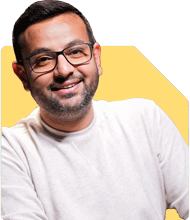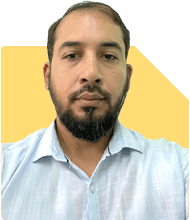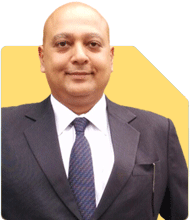Ramalingam Kalirajan |4142 Answers |Ask -Follow
Mutual Funds, Financial Planning Expert - Answered on Jun 30, 2024
He has an MBA in finance from the University of Madras and is a certified financial planner.
He is the director and chief financial planner at Holistic Investment, a Chennai-based firm that offers financial planning and wealth management advice.... more

I have read your detailed responses to various questions and you take out a lot of time to address these questions - that's great. But, I have two questions on some common points that you generally include in your responses: 1. "While index funds have lower fees, they lack the potential for higher returns that actively managed funds offer. They simply track the market and do not aim to outperform it." - have you seen the SPIVA report on India? Most active funds don't beat the index, over a long term. This has also been proven in more mature international markets like USA. 2. Regular funds vs. direct funds - you keep on recommending regular funds. Is it not true that the difference between the regular and indirect funds is the distributor commission, while the funds are managed by the same fund manager? If there is a 0.5% difference in expense ratio per year between direct and indirect funds, what would be the difference in asset value in 10 years? Are you not conflicted by recommending funds that generate higher commissions for you - active, regular, etc.? Can you please disclose the conflict clearly including quantifying the impact on investor?
Active Funds vs. Index Funds: The Indian Context
Active funds and index funds both have their merits. However, the performance and suitability of these funds can vary significantly between markets like India and more mature ones like the USA.
The Case for Active Funds in India
Potential for Higher Returns:
Active funds have the potential to outperform the market. Skilled fund managers can leverage market inefficiencies to generate higher returns.
In emerging markets like India, there are more opportunities for active fund managers to identify undervalued stocks and sectors.
SPIVA Report Insights:
The SPIVA report does highlight that many active funds struggle to beat the index over the long term. However, this is not a universal truth for all funds or all periods.
In India, where market inefficiencies are more prevalent compared to developed markets, active fund managers have a better chance to add value.
Localized Expertise:
Fund managers with deep knowledge of the Indian market can navigate its complexities better than a passive index fund.
They can adjust portfolios in response to economic changes, regulatory shifts, and company-specific developments.
Regular Funds vs. Direct Funds: Understanding the Differences
Regular funds and direct funds are managed by the same fund managers and invest in the same securities. The key difference lies in the cost structure and the value of advisory services.
The Value of Regular Funds
Advisor Support:
Investing through a Certified Financial Planner (CFP) or Mutual Fund Distributor (MFD) offers the benefit of professional advice.
A good MFD helps in creating a personalized investment strategy, regular portfolio reviews, and timely adjustments based on market conditions.
Behavioral Gap Reduction:
The Dalbar study shows a significant gap between investor returns and investment returns, often due to poor timing decisions by investors.
An MFD can help reduce this behavioral gap by providing emotional support and rational advice, ensuring that investors stay the course during market volatility.
Performance-Linked Compensation:
MFDs are compensated based on the portfolio value, which aligns their interests with those of the investor.
When the portfolio performs well, both the investor and the MFD benefit, creating a win-win situation.
Regulated Expense Ratios:
SEBI regulates expense ratios, ensuring they remain within reasonable limits.
While direct funds have lower expense ratios, the value added by an MFD in terms of returns, advice, and support can far outweigh the cost difference.
Quantifying the Impact
Expense Ratio Difference:
The 0.5% difference in expense ratios between regular and direct funds is significant over time.
However, the additional returns generated by following professional advice and the reduction in behavioral errors can more than compensate for this difference.
Performance Over Time:
Assuming a well-managed active fund generates 1-2% higher returns than an index fund, the impact on long-term wealth creation is substantial.
Over a decade, this can lead to a significant difference in portfolio value, justifying the higher expense ratio.
Conflict of Interest Disclosure
Transparency and Ethics:
It’s important to acknowledge that recommending regular funds can appear self-serving due to the commission structure.
However, a good MFD prioritizes the investor’s interests, as their compensation is linked to the portfolio’s performance.
Quantifying the Benefit:
The value added by an MFD through expert advice, personalized strategies, and emotional support can significantly enhance investor returns.
The cost difference of 0.5% in expense ratios is a small price to pay for potentially higher overall returns and a more disciplined investment approach.
Final Insights
Investing in active funds and opting for regular funds through a professional MFD can be highly beneficial in the Indian context. The expertise, support, and personalized advice provided by an MFD can lead to better investment decisions, reduced behavioral gaps, and ultimately higher returns. While the expense ratios might be slightly higher, the value added by professional guidance often outweighs the cost.
Best Regards,
K. Ramalingam, MBA, CFP
Chief Financial Planner,
www.holisticinvestment.in
You may like to see similar questions and answers below
Nikunj Saraf |308 Answers |Ask -Follow
Mutual Funds Expert - Answered on May 22, 2023
Ramalingam Kalirajan |4142 Answers |Ask -Follow
Mutual Funds, Financial Planning Expert - Answered on May 15, 2024
Ramalingam Kalirajan |4142 Answers |Ask -Follow
Mutual Funds, Financial Planning Expert - Answered on May 15, 2024
Saurabh Saxena |22 Answers |Ask -Follow
Tech Career Counselling Expert - Answered on Jul 02, 2024
Saurabh Saxena |22 Answers |Ask -Follow
Tech Career Counselling Expert - Answered on Jul 02, 2024
Saurabh Saxena |22 Answers |Ask -Follow
Tech Career Counselling Expert - Answered on Jul 02, 2024
Saurabh Saxena |22 Answers |Ask -Follow
Tech Career Counselling Expert - Answered on Jul 02, 2024
Ramalingam Kalirajan |4142 Answers |Ask -Follow
Mutual Funds, Financial Planning Expert - Answered on Jul 02, 2024
Ramalingam Kalirajan |4142 Answers |Ask -Follow
Mutual Funds, Financial Planning Expert - Answered on Jul 02, 2024
Aasif Ahmed Khan |27 Answers |Ask -Follow
Tech Career Expert - Answered on Jul 02, 2024
Aasif Ahmed Khan |27 Answers |Ask -Follow
Tech Career Expert - Answered on Jul 02, 2024
Aasif Ahmed Khan |27 Answers |Ask -Follow
Tech Career Expert - Answered on Jul 02, 2024
Sushil Sukhwani |432 Answers |Ask -Follow
Study Abroad Expert - Answered on Jul 02, 2024

















.jpg)




